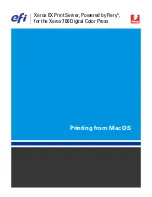
Diagnostic tools 79
1.
In the Main menu screen, select
Boot Settings Configuration
, and then press
Enter
.
2.
Select the
Quick Boot
field.
3.
Press the plus (+) or minus (–) key to set the field to
Enabled
.
4.
Press
F10
to save the changes you made and close the Setup Utility.
5.
Reboot the server.
The Summary screen is displayed briefly at the end of POST.
6.
Press the
Pause/Break
key to continue displaying the screen until another key is pressed.
7.
Press any key to continue with the system bootup.
Power-On-Self-Test
Before you can use a server, all devices must be tested and initialized, and the operating system must
be bootstrapped to the memory. This is referred to as Power-On-Self-Test or POST. POST is a series of
diagnostic tests that checks firmware and hardware components to ensure that the server is properly
functioning. This diagnostic function automatically runs each time the server is powered on.
These diagnostics, which reside in the BIOS ROM, isolate server-related logic failures and indicate the
board or component that needs to be replaced, as indicated by the error messages. Most server
hardware failures will be accurately isolated during POST. The number of tests displayed depends on
the configuration of the server.
During POST you can press:
•
F10
to access the Setup Utility.
•
F12
to request a network boot (PXE).
POST error messages
Whenever a non-critical error occurs during POST, an error message describing the problem appears
onscreen. These text messages are displayed in normal video (white text on black background). It
shows the details of the error. The following is an example of a POST error message:
ERROR
Summary of Contents for ProLiant MicroServer
Page 12: ...Customer self repair 12 ...
Page 13: ...Customer self repair 13 ...
Page 14: ...Customer self repair 14 ...
Page 15: ...Customer self repair 15 ...
Page 16: ...Illustrated parts catalog 16 Illustrated parts catalog Mechanical components ...
Page 20: ...Illustrated parts catalog 20 ...
Page 21: ...Illustrated parts catalog 21 System components ...
Page 38: ...Removal and replacement procedures 38 6 Perform the post installation procedure ...
Page 50: ...Removal and replacement procedures 50 5 Perform the post installation procedure ...
Page 66: ...Diagnostic tools 66 5 Click Browse to select folder and then click Next 6 Click Next ...
Page 67: ...Diagnostic tools 67 7 Click Install 8 Click Finish ...
Page 70: ...Diagnostic tools 70 13 Click options Enable or Disable to change Write cache and NCQ status ...
















































